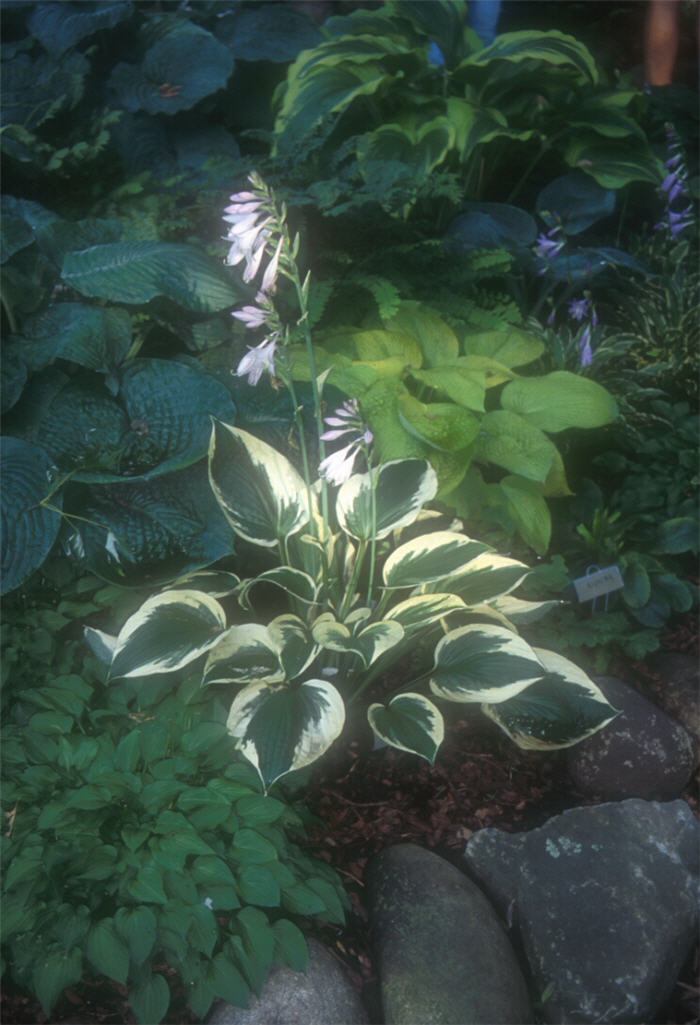| Botanical Name: Hosta 'Patriot' | |
| Common Name: Patriot Hosta |

-
Anatomy
-
Culture
-
Design
Plant Type
Perennial
Height Range
Under 1', 1-3'
Flower Color
Lavender
Flower Season
Summer
Leaf Color
Green, White, Variegated
Bark Color
n/a
Fruit Color
n/a
Fruit Season
n/a
Sun
Half, Shade
Water
High
Growth Rate
Moderate
Soil Type
Clay, Loam
Soil Condition
Average, Rich, Well-drained
Soil pH
Neutral
Adverse Factors
n/a
Design Styles
English Cottage, Formal, Japanese, Tropical, Water Garden, Woodland
Accenting Features
Specimen, Unusual Foliage
Seasonal Interest
Spring, Summer, Fall
Location Uses
Entry, Perennial Border, Shrub Border, Foundation, Patio
Special Uses
Container, Mass Planting, Small Spaces
Attracts Wildlife
n/a
Information by: Stephanie Duer
Photographer: Sunny Border
Photographer: Sunny Border
-
Description
-
Notes
'Patriot' is a boldly colored hosta cultivar with bright white to cream, wide irregular margins surrounding deep green centers on wide, rounded leaves. Grows about 12 to 15 inches tall. Flowers appear mid summer, are lavender, and stand about a foot about the foliage. More heat tolerant than most hosta, it will take some some, but not mid day.
Grow in well drained soil in part shade to full shade to dappled light. Some varieties are listed as being suitable for full sun, but in our hot, dry climate, they all benefit from some mid-day sun protection. Ideally, provide a loamy soil, amended with organic material. Remove spent flower scapes after blooming to encourage more flowering and for a tidy appearance. In early spring, remove spent foliage, taking care to watch for new foliage emerging from the crown. Though not thought of as a "water-wise" plant, Hostas do remarkably well in dry part-shade to full-shade conditions, and are frequently the victim of over-watering, succumbing to crown or root rot.